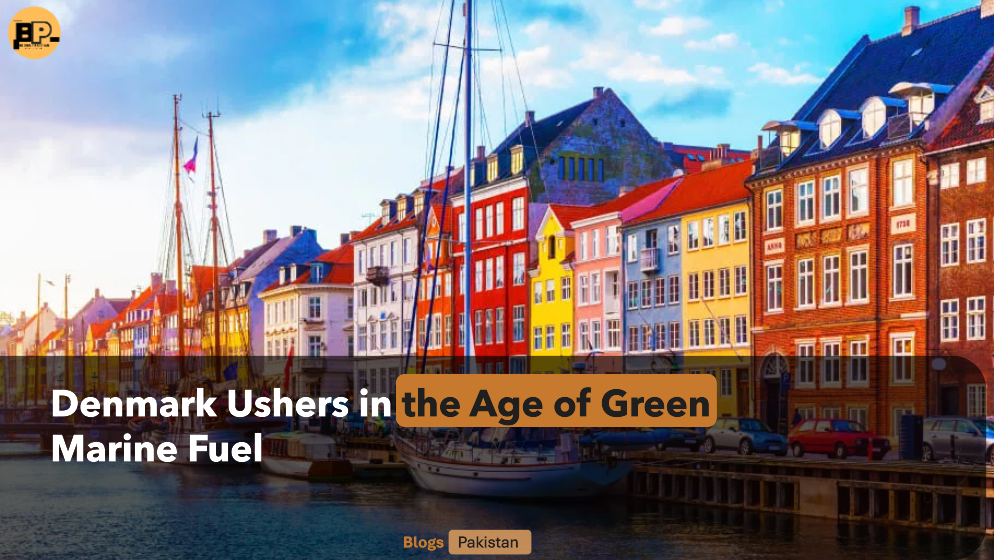Imagine a world where the colossal container ships Green Marine that crisscross our oceans, the very arteries of global trade, no longer belch plumes of carbon into the atmosphere. It sounds like a distant dream, a futuristic vision sketched in hopeful strokes. But in the quiet landscapes of southern Denmark, that vision has just taken a monumental leap towards reality.
The world’s first commercial-scale e-methanol plant has sprung to life, a beacon of innovation signaling a potential turning point for the notoriously carbon-intensive shipping industry. This isn’t just another green initiative; it’s the tangible dawn of a new era in maritime transport, powered by the very elements we strive to protect.
A Sea Change on the Horizon: The Pressure for Sustainable Shipping
The global shipping sector finds itself under increasing scrutiny, the weight of environmental responsibility pressing down like the vast containers its vessels carry. With a growing consensus among nations supporting the International Maritime Organization’s ambitious targets for eliminating carbon emissions by 2050, the pressure to find cleaner alternatives to traditional bunker fuel has intensified. The industry, a linchpin of global commerce, is actively seeking a radical transformation, and the emergence of zero-emission fuels like green ammonia and e-methanol offers a tangible pathway forward.
The Price of Progress: Bridging the Cost Gap
For too long, the promise of sustainable shipping fuels has been tethered to the economic realities of scale. Green ammonia and e-methanol, produced using renewable energy sources, have typically commanded a higher price tag than their fossil fuel counterparts, largely due to limited production volumes.
However, pioneers like Knud Erik Andersen, CEO of Denmark’s European Energy, are optimistic, projecting a potential price parity with fossil methanol by around 2035. This anticipated convergence underscores the crucial role of commercial-scale production in driving down costs and making sustainable alternatives economically viable.
A Danish First: The Kasso Plant Sets Sail for a Greener Future
Nestled in Kasso, this groundbreaking plant, a collaborative effort between Denmark’s European Energy and Japan’s Mitsui, represents a significant investment – an estimated 150 million euros ($167 million) poured into the promise of a cleaner tomorrow. Its annual production capacity of 42,000 metric tons, or 53 million liters, of e-methanol is not just a number; it’s a tangible volume capable of powering a substantial portion of the shipping industry’s needs.
Maersk Steers Towards Sustainability: A Major Endorsement
The commitment of shipping giant Maersk as a major customer for the Kasso plant provides a powerful endorsement for e-methanol as a viable low-emission fuel. Operating a fleet of 13 dual-fuel methanol container vessels, with another 13 on order, Maersk is actively investing in the infrastructure and technology needed to transition towards greener operations. The fact that the Kasso plant’s annual output is enough to power one of Maersk’s large 16,000 container vessels on a round trip between Asia and Europe puts the scale of this achievement into stark perspective.
The Pioneer Vessel: Laura Maersk Fuels the Future
The smaller Laura Maersk, the world’s first dual-fuel container ship with a capacity exceeding 2,100 twenty-foot equivalent units, offers an even more immediate example of e-methanol’s potential. Requiring a relatively modest 3,600 tons of fuel per year, the Laura Maersk’s scheduled fueling near the Kasso plant on its inaugural voyage symbolizes the tangible link between production and application, a crucial step in establishing a viable green shipping ecosystem.
From Fossil Fuels to Renewable Resources: The E-Methanol Advantage
Traditional methanol production relies heavily on natural gas and coal, contributing to greenhouse gas emissions. In stark contrast, the Kasso plant will produce e-methanol using renewable energy sources and captured CO2 from biogas plants and waste incineration. This closed-loop approach not only reduces reliance on fossil fuels but also utilizes captured carbon dioxide, transforming a byproduct into a valuable resource. This innovative production method lies at the heart of e-methanol’s appeal as a truly sustainable fuel.
Beyond Shipping: E-Methanol’s Wider Applications
The potential of e-methanol extends beyond the maritime sector. Its ability to replace fossil methanol in the production of plastics opens up exciting possibilities for other industries seeking to decarbonize their supply chains. The fact that Danish giants like drugmaker Novo Nordisk and toymaker Lego will utilize e-methanol from the Kasso plant in their manufacturing processes – for injection pens and plastic elements, respectively – highlights the versatility and broad applicability of this green chemical.
A Community Benefit: Harnessing Waste Heat
Adding another layer of sustainability to the Kasso plant’s operations is its innovative use of excess heat generated during the e-methanol production process. This heat will be harnessed to warm approximately 3,300 households in the local area, turning a potential waste product into a valuable resource for the community. This holistic approach underscores the potential for green energy initiatives to deliver benefits that extend beyond their primary function.
Charting a Course for Expansion: A Global Vision
European Energy’s ambitions extend far beyond the Kasso plant. CEO Andersen has outlined plans for expanding the Danish facility and developing a pipeline of similar e-methanol production plants across Europe, Australia, Brazil, and the United States. This global vision signals a strong belief in the scalability and widespread adoption of e-methanol as a key component of a sustainable future for multiple industries.
The opening of the Kasso plant is not just a local achievement; it’s a global harbinger, suggesting that the tide is indeed turning towards cleaner, greener solutions for powering our world. The journey towards a zero-emission future is long, but with initiatives like this, the sails are finally catching a promising wind.










